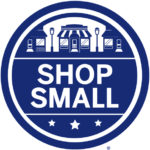 As far as I am concerned, Small Business Saturday is the quintessential example of Marketing as Service, achieving the kind of success that most marketers can only imagine. The service in this case not only establishes a day that puts the spotlight on small businesses and rivals Black Friday and Cyber Monday, but also enables small businesses to be more competitive throughout the year, with marketing toolkits that highlight their distinct advantages over their larger competitors.
As far as I am concerned, Small Business Saturday is the quintessential example of Marketing as Service, achieving the kind of success that most marketers can only imagine. The service in this case not only establishes a day that puts the spotlight on small businesses and rivals Black Friday and Cyber Monday, but also enables small businesses to be more competitive throughout the year, with marketing toolkits that highlight their distinct advantages over their larger competitors.
With the third annual Small Business Saturday set for November 24, perhaps the most remarkable part of this program is how it is developing a life of its own, with politicians uniting over its significance and more and more small business owners trying to take advantage of “their” day. To better understand the thinking behind this program, I spent a good hour on the phone with Scott Krugman, Director of Communications at American Express. Here’s part 1 of my interview with Scott.
Drew: So let’s start with the origin of the idea of Small Business Saturday back in 2010.
Well, like all good ideas, in a way, they originate from our customers. AmEx OPEN’s been around now for twenty-five years, and the reason why we’ve been around so long and been so successful is because we really take the pulse of our customers in a variety of ways, and in this particular case, what we found out through research and talking to our customers, their biggest need coming out of the recession was more customers. So that got us to thinking, what can we do to help small businesses get more customers?
Drew: So after identifying the need, what then?
After a number of conversations with a lot of people, the thought came: what could we do to drive business to small businesses during key times throughout the year? Naturally, that got folks in the room talking about the holiday season. Obviously big-box merchants have “Black Friday.” Online merchants, more recently, have Cyber Monday. So we thought there might be something there for small businesses, and the thought here was, let’s give small businesses their ceremonial kickoff to the holiday season. Let’s get their holiday shopping season off to a strong start. Let’s create a day for them. It wasn’t as quick and as simple as I’m making it out to be, but what that ended up becoming was Small Business Saturday.
Drew: Looking back now, it seems like a no-brainer, but why back in 2010 did you think it would work?
We thought it was the right message at the right time. There were a lot of conversations that were happening about the importance of small businesses to the economy. The “shop local” movement was going strong, so we knew that there would be a lot of support. We also knew through research that 98 percent of consumers said that they wanted to support small businesses. So we wanted to create something that would take that support and turn it into sales. And as we started iterating, it became clear that this was a movement.
Drew: So how long did it take to go from idea to execution?
I should point out in terms of the timing element, this was basically getting the concept of Small Business Saturday to market—it had to happen in a matter of a few weeks.
Drew: Wait, let me make sure I heard you correctly. So in 2010, from green light to execution, it took how long?
A matter of weeks!
Drew: Did you advertise Small Business Saturday in Year 1 (2010)?
There was definitely advertising. There was also a press conference at city hall involving New York City Mayor Bloomberg and our CEO, Ken Chenault. There was a lot of earned media around it in terms of announcing the day. It was a unique enough concept where it got a lot of curiosity and a lot of pickup.
Drew: What role did social media play in the launch of SBS?
There was a lot of social media around it. In just that first year, we saw 1.2 million people liking the Small Business Saturday Facebook page. That’s a lot of likes in a very short period of time. We saw 30,000 tweets using the hashtags #SmallBusinessSaturday and #SmallBizSaturday. I was told this, and I guess it was determined with Google, that it (“Small Business”) was the fastest-rising Google search term over that time period. So, I mean, there was a lot that went into it, but we knew in order for this thing to take off, it really needed to have a strong foundation in social media for it to become viral. That certainly worked.
Drew: So why do you think this program took off?
We’re looking at four factors that really helped. One was there was a lot of inclusiveness. There was national scope. The message was clear in terms of individuals being able to boost the economy. This is really key and really important, because as much as we talk about American Express in this—and we’re not always comfortable doing that because we feel it takes away from the day—it became an agnostic day. For small businesses to participate, they don’t have to accept the American Express card. For consumers to participate, they don’t have to use the American Express card. Is American Express making an offer for consumers on the day? Yes. But, they’re not limited to using that card in order to make a difference.
Drew: How did small businesses react?
It created a solution to help spur more business for small businesses, and small business owners really took to it. I think in Year 1, not as much, because there wasn’t a lot of time to get them to own the day. So I would say Year 1 was probably more about claiming the day.
Drew: So this feels a bit like cause marketing, another idea AmEx essentially invented.
You know, there are a couple schools of thought on that. Small businesses definitely needed the help. But at the same time, this isn’t charity. Small businesses are the engine that drives the economy. They’re creating jobs. If people support small businesses, they’re supporting their local communities. So they’re not just supporting the businesses, they’re supporting themselves. They’re helping everyone. It makes the entire engine work, especially as you’re coming out of recession. But the other piece of it is, it’s the discovery aspect of what makes small businesses so special. And it’s not the fact that maybe they do need the help, but it goes beyond that. It’s helping consumers rediscover these businesses that have been there all along in their communities: the amazing customer service, the unique selection and the special experiences.
Drew: So how do small business compete against larger rivals in the face of discounting?
They focus on their core elements. Large businesses spend millions of dollars a year on customer relationship management tools to understand their customer. Small businesses? That’s an inherent part of who they are. So it’s a day for them to really leverage those strengths and allow consumers to kind of rediscover what makes them great. But at the same time, it’s helping small businesses not just own the day, but give them the tools that they need to thrive during the day. This might kind of take us a little bit into Year 2, but we can always pivot back and forth.
Drew: It must have been tricking to balance AmEx branding and the SBS idea…
This is one of those campaigns where the message was so compelling, and the reason for doing it was so genuine, that people naturally wanted to take part in it. Again, this is where it needs to become more than just about American Express, because you’re not going to get the response from public officials if Small Business Saturday is owned by any one corporate entity. You’re not going to get that kind of response.
So that’s why it’s more than just about us. We might have been the one to push the idea into the marketplace, but in all honesty, it’s the small business owners that owned the day. It’s their day. We might have given it to them, but they have taken it and made it their own. We will always support it. We will always do things in the marketplace to support the day and to support small business owners because that’s what we do at OPEN. But it is their day, and that’s what makes it genuine. And frankly, that’s what’s made it successful.
Drew: Was it hard to relinquish ownership of this idea?
That’s a fair question. I think it’s one of the tough things when there’s such a good idea on the table. I think the natural inclination is to want to own and control it. But that’s the irony here. For it to be successful, you couldn’t do either. And I think there were enough smart people in the room to know that. Ultimately, we realized, it takes a village to create a day.
Drew: AmEx “$25 offer to shop small” couldn’t have hurt the program.
For us to do this right, AmEx also had to be “skin in the game,” so of course the card member offer was critical. Otherwise, it’s just lip service. Like I said, Small Business Saturday is what we created for the entire small business community. But I think our merchants come to expect us to look out for them in ways that others don’t.
Drew: So, did Small Business Saturday drive small business sales?
Yes, actually. I can tell you on the record that transactions of—we can only right now measure folks that use the American Express card, right? That’s what we have available to us. So for merchants that accept the card, card transactions were up 23 percent on the day.
Drew: How about the softer measures like favorability among small businesses towards the AmEx brand?
I’m limited in terms of some of the metrics that I can discuss. But let’s say our philosophy is, if you do the right thing, customers are going to recognize that about you. And I think that there are not many companies that would have been able to do something like a Small Business Saturday in a genuine way. I think that has a lot to do with the OPEN brand as it relates to American Express, frankly.
Drew: It must help that this is not the first time you’ve focused on small businesses.
Yes. We’ve been in the marketplace for small businesses probably longer than anyone else. I believe we had the first business card devoted to small businesses. I think because of the history we have in this community, there’s an expectation that we are going to be supportive beyond product offerings. So I think that it’s one of those situations where all those interests are aligned. Obviously, we have an interest in doing the right thing to help small businesses: it’s what we’ve been doing. Our customers expect us to help them with their solutions. So I think you could say, in a lot of ways, Small Business Saturday was a result of us doing what we have always done, and that’s listening to our customers’ needs and trying to find solutions. It just so happens that we found something, in this particular case, that was massively innovative. And is there a halo effect from that? Absolutely. That’s why I think you see a lot of other companies wanting to be a part of Small Business Saturday as well.
Drew: So is this about doing well by doing good?
Like I said, I think for a company to do the right thing in a meaningful way, it needs to be genuine. And I think the marketplace, whether it’s small business owners or consumers, are smart enough to know when it’s not. So I think it needs to start from the desire of wanting to do good and wanting to do the right thing. That’s where Small Business Saturday is no different. That’s where it starts. I think there’s… if you do the right thing in the right way, good things come with that, yes.
 The Social Media World Forum (SMWF) hits NYC next week with an exciting list of speakers and topics. High on my list of “must sees,” is a case study on Pinterest being presented by Morgan Baden, Director of Social Media & Internal Communications at Scholastic Inc. I was delighted to be able to catch up with Morgan and get a sneak peak of Scholastic’s approach to Pinterest and how they have been able to gain so much traction in a relatively short time frame. Given Pinterest’s recent announcement of more brand-friendly pages, now is as good time as any to increase your knowledge of this rapidly growing channel.
The Social Media World Forum (SMWF) hits NYC next week with an exciting list of speakers and topics. High on my list of “must sees,” is a case study on Pinterest being presented by Morgan Baden, Director of Social Media & Internal Communications at Scholastic Inc. I was delighted to be able to catch up with Morgan and get a sneak peak of Scholastic’s approach to Pinterest and how they have been able to gain so much traction in a relatively short time frame. Given Pinterest’s recent announcement of more brand-friendly pages, now is as good time as any to increase your knowledge of this rapidly growing channel.


